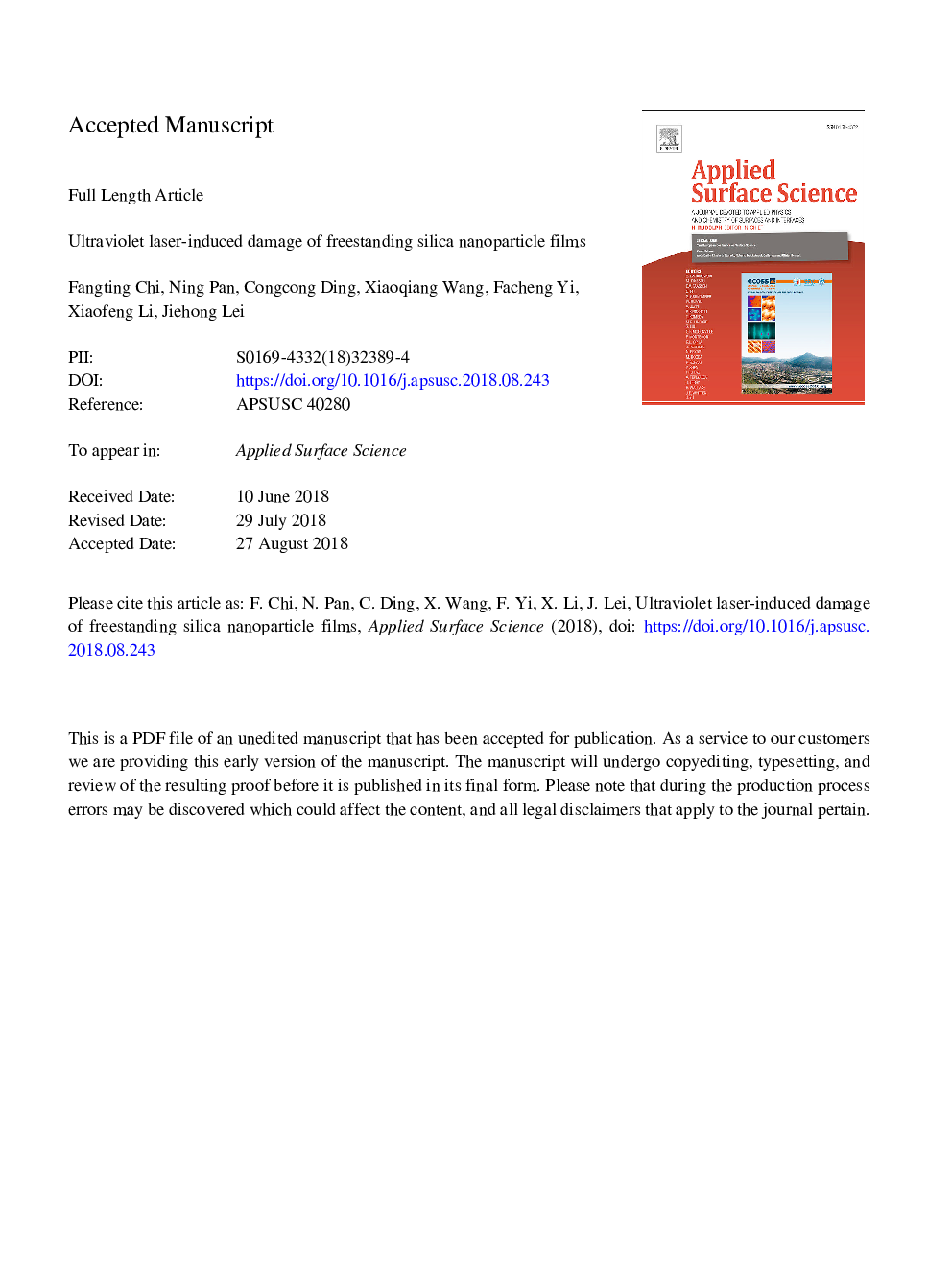| Article ID | Journal | Published Year | Pages | File Type |
|---|---|---|---|---|
| 10141367 | Applied Surface Science | 2019 | 20 Pages |
Abstract
Silica nanoparticle antireflection films are essential for the development of high-power laser systems because of their high laser damage threshold in ultraviolet (e.g., 351â¯nm or 355â¯nm). However, most laser damage reports focus on the films standing on substrates, and the intrinsic laser damage behaviors of the silica nanoparticle films are poorly understood due to the influence of the substrates. Here, we investigate the ultraviolet laser damage behaviors of the freestanding silica nanoparticle films. We find that silica nanoparitcle films demonstrate higher laser damage threshold than the fused silica substrates under the irradiation of 355-nm laser. For the films on the fused silica substrates, the laser damage is caused by the substrates. In the case of freestanding films, laser-damage resistance is strongly dependent on the film thickness and the amount of organic groups in the films. The laser damage threshold increases from 103 to 159â¯J/cm2 @ 355â¯nm with decreasing the film thickness from 322 to 31â¯nm. In addition, removal of organic groups from the films results in higher laser damage threshold. Our findings provide insight into the laser damage behavior of the silica nanoparticle films and foreshow a possible way to improve the laser-damage resistance.
Related Topics
Physical Sciences and Engineering
Chemistry
Physical and Theoretical Chemistry
Authors
Fangting Chi, Ning Pan, Congcong Ding, Xiaoqiang Wang, Facheng Yi, Xiaofeng Li, Jiehong Lei,
